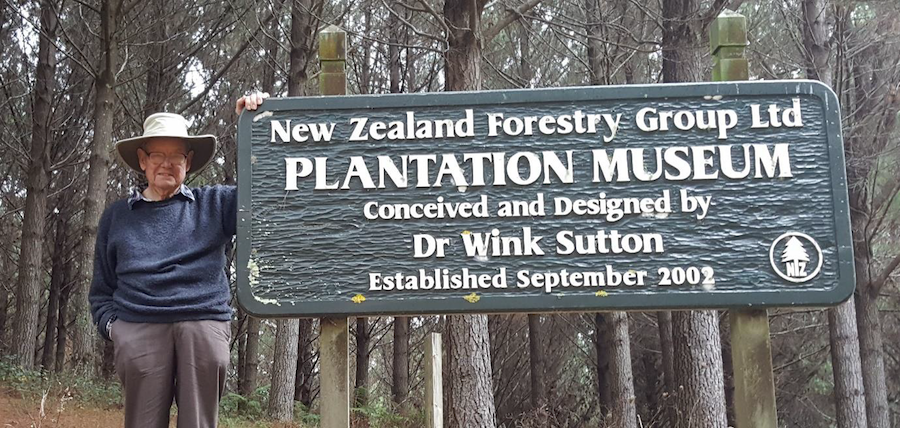Plantations can be very productive
From New Zealand Tree grower November 2016

On a visit to Poland in 2006 one of my Polish forester hosts was adamant that plantations of non-indigenous trees could not be as productive as plantations of indigenous trees. Nonindigenous plantations were also at much greater risk. Some overseas foresters, as well as some environmentalists, hold similar opinions.
Why do they hold such negative opinions of plantations of non-indigenous plantations? There is now ample evidence that, if planted on suitable sites, nonindigenous tree species can be very productive.
The experience with plantations in Saxony, Germany in the late 19th Century has been retold countless times. A plantation of Norway spruce, a tree species not normally occurring so far south, had poor growth and general ill-health. This early experience is the probable basis of many objections to plantations of nonindigenous tree species. In addition, plantations worldwide have been established as monocultures and many believe monocultures are not natural, even though there is ample evidence that in the temperate regions natural monocultures are not uncommon – see my comment in the August issue of Tree Grower.
Subsequent research of the site showed that the poor growth and poor health were because the site had limited drainage and waterlogged soils – the roots of the spruce trees were unable to penetrate below the topsoil. The site was totally unsuited to the species. Later research showed that local farmers had for decades removed the fallen needles for animal bedding, thereby depriving the trees of being able to recycle nutrients and therefore contributing to the site decline.
Successful plantations
As well as New Zealand’s plantation experience there are many examples of successful plantations of non-indigenous tree species. The most dramatic example of plantation success comes from Brazil. The indigenous forest of the Amazon basin is very slow growing. According to the UN Food and Agriculture Organization, Amazonian mature forests only average 100 cubic metres a hectare of which only 12 cubic metres a hectare can be used. To the south of the Amazon, but north of the Tropic of Capricorn, are the eucalypt pulpwood plantations of Aracruz. There are reports of an annual growth rate of these plantations exceeding 50 cubic metres a year for each hectare. In agriculture there are no concerns about the use of non-indigenous plants or animals. If New Zealand was limited to indigenous flora and fauna there is no way that we could support a population of over four million people. We would be very limited in what we could eat − fern shoots and roots, a few plants, native birds and seafood. We would have almost nothing to export.
Feeding the world
By having access to the biodiversity of the whole world and combined with selective breeding, the world has been able to feed over seven billion people globally. In food production the world has been very selective. The UN Food and Agriculture Organization estimates there are 250,000 to 300,000 plant species globally that could be eaten. However, humans consume only about 200 plant products. Although the latter estimate probably understates what is globally consumed, most of our plant food comes from only nine plants − with maize, wheat, rice and potatoes being the four most significant ones.
When we consider meat sources we have been even more selective. Most meat comes from cows and pigs while the consumption of sheep meat, venison and goat meat hardly register. When it comes to bird meat almost all comes from one bird − the chicken. We have been so selective because we have concentrated our breeding effort on the few species which are very easy to manage, very pleasant to eat and are very productive.
In the future less of our wood will come from managed indigenous forests. These forests are not only expensive to manage but also less productive and therefore less profitable. Because wood is essential to our life style and because wood is environmentally friendly and renewable, our wood will increasingly come from plantations. Most of these will be monocultures of non-indigenous tree species. In the future we will have no option but to parallel agriculture and concentrate on those tree species which grow fast and are very useful.
Disclaimer: Personal views expressed in this blog are those of the writers and do not necessarily represent those of the NZ Farm Forestry Association.

 Farm Forestry New Zealand
Farm Forestry New Zealand
No posts yet
Add a post